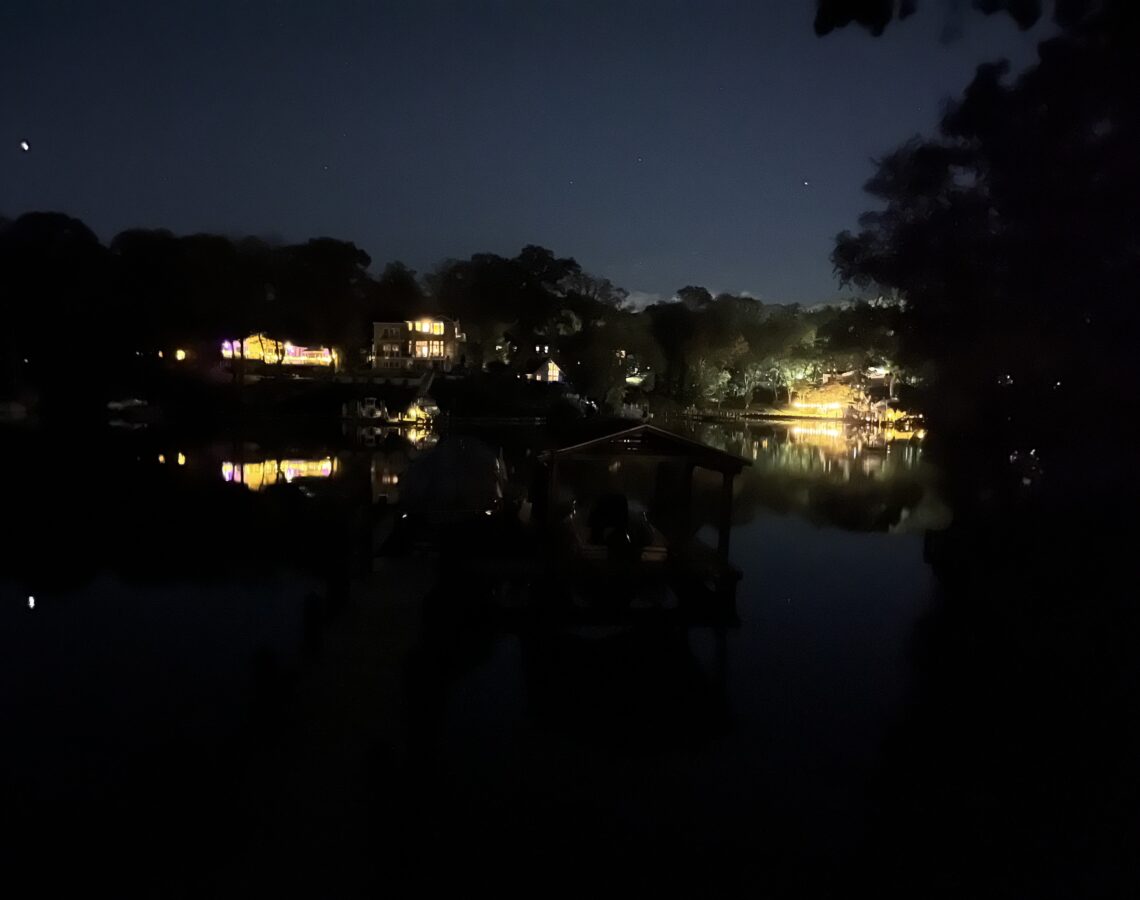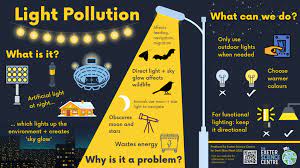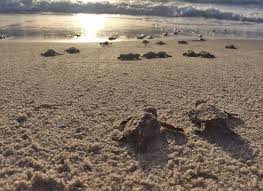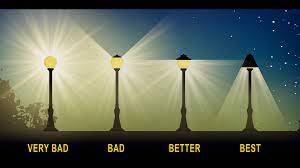Issue 9 | November 2023 | Light Pollution and Its Impact on Nature

By Debi Cruse, Guest Writer
Life flourishes in the serene waters and surrounding environments of the Chesapeake Bay. The Bay is more than just a body of water. It’s a lifeline for countless species, a hub for recreational activities, and  the heart of our community. It’s known for its rich biodiversity, and for centuries has supported a wide array of animal and plant species as well as the ecosystems they inhabit. However, as the 21st century advances, a phenomenon, known as light pollution, has impacted life around the Chesapeake Bay including migratory birds, turtles, and other animals as well as the ecosystems they inhabit.
the heart of our community. It’s known for its rich biodiversity, and for centuries has supported a wide array of animal and plant species as well as the ecosystems they inhabit. However, as the 21st century advances, a phenomenon, known as light pollution, has impacted life around the Chesapeake Bay including migratory birds, turtles, and other animals as well as the ecosystems they inhabit.
Nearly every living organism has a circadian rhythm, an internal biological clock guiding their physiological processes. Artificial lighting can disrupt these rhythms in wildlife, affecting their feeding, reproduction, and overall health.
Birds use natural light, like the moon and stars, for navigation during annual migrations. They can become disoriented by unnatural sources of light from streetlights and lights on homes and businesses. This can lead to birds losing their sense of timing for departures and arrivals, flying off-course, becoming exhausted, and having collisions with buildings which can often result in death.
Sea turtles suffer similar consequences.  Hatchlings are naturally drawn to the moonlit horizon of the ocean to guide them to the sea, but when the shoreline is illuminated by artificial light, they become confused and misled. As they wander inland, the hatchlings face threats like dehydration, predators, exhaustion, and automobiles.
Hatchlings are naturally drawn to the moonlit horizon of the ocean to guide them to the sea, but when the shoreline is illuminated by artificial light, they become confused and misled. As they wander inland, the hatchlings face threats like dehydration, predators, exhaustion, and automobiles.
Apart from birds and turtles, many other species rely on natural light for feeding, sleeping, mating, and finding their way. Interference with these patterns can not only disturb their daily routines, but over time it can impact populations.
Beyond individual species, light pollution impacts ecosystems as well. Every species plays a role in these intricate networks and when one species is affected, it can create a ripple effect on other species causing imbalances. Decreased bird populations could create an increase in insects, which in turn could affect the health of plants and humans (think of mosquito and tick disease transmission). A decline in turtle numbers can impact the balance of marine ecosystems. Light pollution can also penetrate water surfaces, disturbing nocturnal aquatic creatures, and influencing processes like algae bloom, which can have detrimental effects on water quality.
While the situation may seem daunting, there are proactive steps we can take to mitigate the effects of light pollution. By using fully shielded outdoor fixtures, light is directed downwards, minimizing skyglow.  Other actions we can take include using motion sensors or timers, switching to warm-colored, lower intensity lights, and turning off lights when not needed, especially during migration seasons. Read here for more ideas in outdoor lighting. Another step we can take is to educate ourselves and others on the impact of light pollution. Once we realize a problem exists, we can advocate for better conditions in our neighborhoods by sharing what we’ve learned with friends, neighbors, and local officials. Read more here about the danger of building lights to birds.
Other actions we can take include using motion sensors or timers, switching to warm-colored, lower intensity lights, and turning off lights when not needed, especially during migration seasons. Read here for more ideas in outdoor lighting. Another step we can take is to educate ourselves and others on the impact of light pollution. Once we realize a problem exists, we can advocate for better conditions in our neighborhoods by sharing what we’ve learned with friends, neighbors, and local officials. Read more here about the danger of building lights to birds.
The Chesapeake Bay area is a treasure trove of biodiversity, and it’s up to us to preserve its integrity. As we dim the lights and let nature reclaim the night, we’re not just helping wildlife but we’re also rediscovering the beauty of starlit nights and the rhythms of the natural world.

